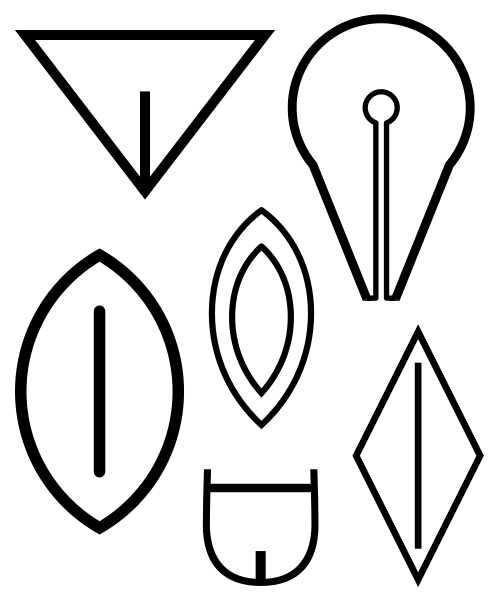Plik:Vulva symbols.svg

Wielkość pliku podglądu PNG dla pliku SVG: 500 × 600 pikseli Inne rozdzielczości: 200 × 240 pikseli | 400 × 480 pikseli | 640 × 768 pikseli | 853 × 1024 pikseli | 1707 × 2048 pikseli.
Rozmiar pierwotny (Plik SVG, nominalnie 500 × 600 pikseli, rozmiar pliku: 3 KB)
Historia pliku
Kliknij na datę/czas, aby zobaczyć, jak plik wyglądał w tym czasie.
| Data i czas | Miniatura | Wymiary | Użytkownik | Opis | |
|---|---|---|---|---|---|
| aktualny | 05:20, 24 wrz 2022 |  | 500 × 600 (3 KB) | Smasongarrison | slimmed down with svgomg // Editing SVG source code using c:User:Rillke/SVGedit.js |
| 07:51, 5 kwi 2017 |  | 500 × 600 (4 KB) | AnonMoos | Reverted to version as of 11:32, 2 September 2008 (UTC) | |
| 22:38, 15 sty 2017 |  | 938 × 1125 (108 KB) | JMCC1 | error in egyptian symbol | |
| 13:32, 2 wrz 2008 |  | 500 × 600 (4 KB) | AnonMoos | tweaking most-recently added symbol for exact symmetry | |
| 00:55, 1 paź 2007 |  | 500 × 600 (4 KB) | AnonMoos | adding further symbol | |
| 09:13, 4 wrz 2007 |  | 500 × 600 (3 KB) | AnonMoos | adding symbol | |
| 22:48, 26 sie 2007 |  | 500 × 600 (2 KB) | AnonMoos | Four symbolic representations of external female genitals as they have been used in various historical/cultural contexts: 1) Upper left: A schematized drawing of the pubic triangle; among other things, this is the earliest archaic form of the ancient Sum |
Lokalne wykorzystanie pliku
Poniższa strona korzysta z tego pliku:
Globalne wykorzystanie pliku
Ten plik jest wykorzystywany także w innych projektach wiki:
- Wykorzystanie na als.wikipedia.org
- Wykorzystanie na ca.wikipedia.org
- Wykorzystanie na cs.wikipedia.org
- Wykorzystanie na de.wikipedia.org
- Wykorzystanie na en.wikipedia.org
- Wykorzystanie na en.wikiquote.org
- Wykorzystanie na es.wikipedia.org
- Wykorzystanie na fr.wikipedia.org
- Wykorzystanie na ja.wikipedia.org
- Wykorzystanie na ru.wikipedia.org
- Wykorzystanie na sv.wikipedia.org
- Wykorzystanie na uk.wikipedia.org
- Wykorzystanie na uz.wikipedia.org
- Wykorzystanie na www.wikidata.org
- Wykorzystanie na zh.wikipedia.org
